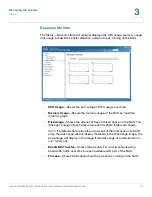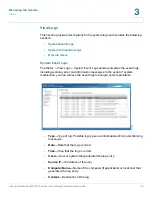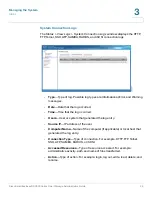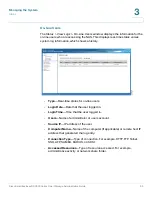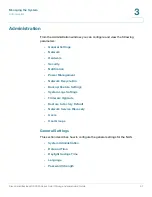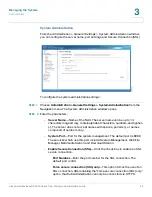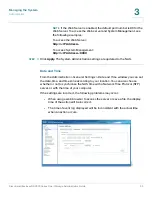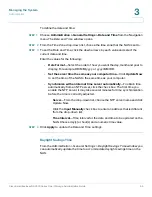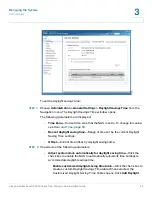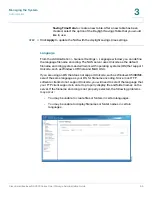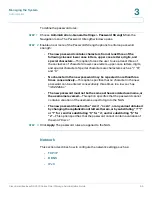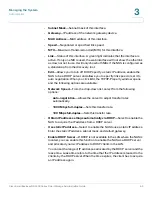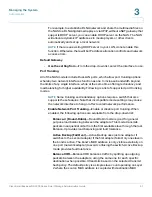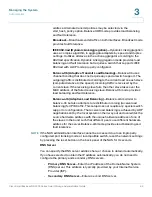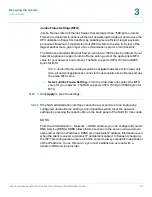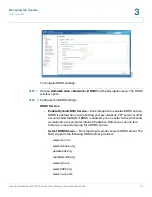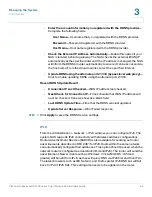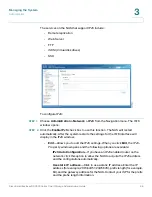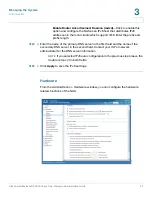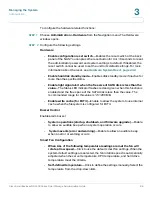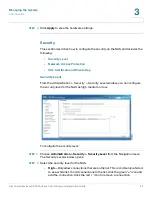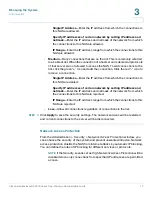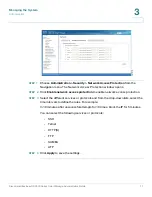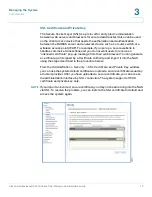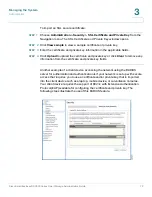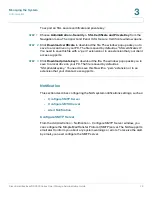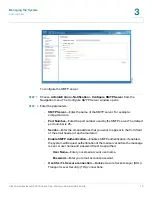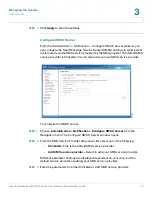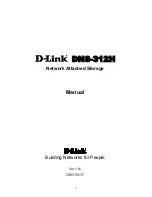
Managing the System
Administration
Cisco Small Business NSS300 Series Smart Storage Administration Guide
61
3
For example, to establish a DLNA network and share the multimedia files on
the NAS to a DLNA digital media player via UPnP, without a NAT gateway that
supports DHCP server, you can enable DHCP server on the NAS. The NAS
will allocate dynamic IP addresses to media players or other clients
automatically and set up a local network.
NOTE
If there is an existing DHCP server in your LAN, do not enable this
function. Otherwise, there will be IP address allocation conflicts and network
access errors.
Default Gateway
•
Use the setting from
—From the drop-down list, select the interface to use.
Port Trunking
All of the NAS models include Dual-LAN ports, which allow port trunking options
whereby two network interfaces function as one to increase bandwidth beyond
the limits of any single interface, while at the same time offering redundancy and
load balancing for higher availability. Following is a list of supported port trunking
modes.
NOTE
Some trunking and redundancy options require a switch that also
supports these features. Note that incompatible mode settings may cause
the network interface to hang or affect overall network performance.
•
Enable Network Port Trunking
—Enable or disable port trunking. When
enabled, the following options are available from the drop-down list:
-
Balance-rr (Round-Robin)
—Round-Robin mode is good for general
purpose load balancing between the adapters. This mode transmits
packets in sequential order from the first available slave through the last.
Balance-rr provides load balancing and fault tolerance.
-
Active Backup (Fail Over)
—Active Backup uses just one adapter. It
switches to the second adapter if the first adapter fails. Only one slave in
the bond is active. The bond’s MAC address is only visible externally on
one port (network adapter) to avoid confusing the switch. Active Backup
mode provides fault tolerance.
-
Balance XOR
—Balance XOR balances traffic by splitting up outgoing
packets between the adapters, using the same one for each specific
destination when possible. It transmits based on the selected transmit
hash policy. The default policy is a simple slave count operating on Layer
2 where the source MAC address is coupled with destination MAC

